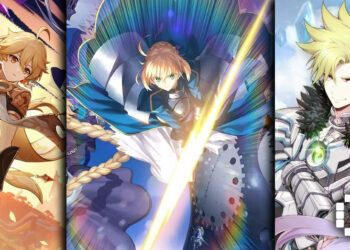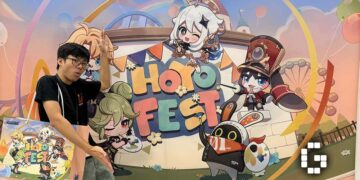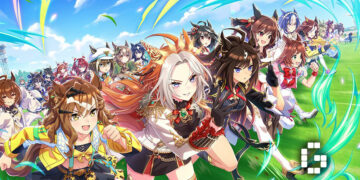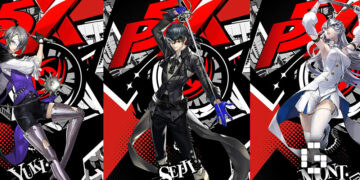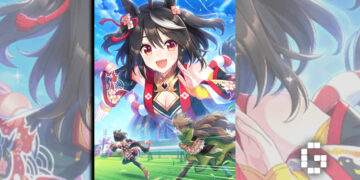The launch of the much anticipated Final Fantasy VII Rebirth is approaching and we had a fortunate opportunity to have a 5 hour play session of the game at Square Enix Headquarters in Shinjuku, Tokyo.
Final Fantasy VII Rebirth marks the return to the world of Gaia. It continues Cloud’s adventure, re-imagining the much beloved overarching narrative, world, and characters of the original 1997 release and expanding its exploration space to an open world.

The Beauty of Junon
Picking off after the events of Final Fantasy VII Remake, we get to follow the main squad as they arrive at the outskirts of Junon as the lush green and flowery scenery welcomes you with a soothing familiar melody playing in the background.
Junon is now an open world explorable zone, filled to the brim with side content such as side quests, minigames, and challenges. While exploring, you can certainly feel the sense of scale for Junon, given the size of the region and how many exploration bits you can get into. Like many open world games, every nook and cranny is worth exploring as there may be some treasure chests or Shinra Boxes tucked away.
Exploring feels great and fills me in wonder as the freedom of movement has been given an upgrade, removing much of the restrictions in Remake that limit you on where you can or cannot go. You can even scale up high dilapidated brick walls with a jump by dashing. While Rebirth may not feel as free as other open world games, its world is littered with elements that draw your attention as you stroll about.
A fascinating part of Rebirth that may go unnoticed is how fast and seamless the loading speed is, which can feel like it has little to no loading screens at all. This makes for almost no interruption to bother you while traveling between places and going exploring immediately.

Of course, one of the most exciting parts of Final Fantasy is to meet with the lovable yellow mascot bird, Chocobo. In Rebirth, they are mounts that Cloud and his party could ride to explore around the overworld. Chocobos are separated per region, so to start riding one in new areas, you would need to wrangle one in the wild. After successfully capturing one, you can summon it at any time in said region, allowing you to sprint at top speed and glide around the viridescent grasslands.
Transitioning into open world exploration also means more items to collect and Final Fantasy VII Rebirth introduces Transmute, where you gather materials in the wilds and craft them useful items such as recovery consumables.
Side Quest Galore
Shifting into open world format also means the map will be packed with side content, especially side quests. In Final Fantasy VII Rebirth, the side quests will be split into two categories, World Intel from Chadley and the mercenary quests. In general, some quests are long and take you to different interconnected scenarios to complete while some are short stories with engaging cutscenes.
Clearing these side quests is not only engaging but became a crucial part of improving Party Level, which will help bolster Cloud’s and his allies’ capabilities

Apart from side quests, minigames flood the world of Final Fantasy VII Rebirth and one such game is the Queen’s Blood card game. This particular card game is rather fascinating as it feels like a modern reiteration of the Triple Triad card game from Final Fantasy VIII, but with more mechanics that heighten the complexity in a good way.
Synergy Go Boom
Transitioning from Remake to Rebirth, one of the biggest changes to the combat is the inclusion of the more realized version of Synergy Attack from the Episode INTERmission DLC. Square Enix had gone on record to boast the Synergy System, saying that it is a feature that would further tighten the relationship between the beloved characters.
Synergy Attacks are indeed gold now and each of them grants special effects, such as unlimited MP for a duration, increased Limit Break Level for more powerful versions of them, and more. The downside is that characters would have to spend ATB to generate the Synergy Bar, so much strategic consideration is recommended.
This is an extremely exciting change to an already terrific combat system and opens up more strategic depth, especially when going toe-to-toe against bosses in prolonged battles.

Another great addition is the new learnable elemental skills in the game that function similarly to magic spells. This new addition enhanced the combat flexibility greatly, providing players a way to spend ATB instead of MP to pressure enemies and push for stagger. Furthermore, there will be an interesting mix of new material in Rebirth, for example, combining Fire and Ice materia and so on in addition to AI-supporting ones.
Speaking of learning skills, the Party Level is where you can unlock available skills for the party through a skill tree system, especially the Synergy Attacks. To do so, simply interact with the Folio or similar vendors. Meanwhile, Weapon Levels grant SP, and changing the weapon will not affect its levels. Additionally, the Weapon Upgrade feature got a complete overhaul as weapons can now equip skills, which could be regular stat boosts or simply increase duration on unique skills. SP is required to unlock these weapon skills, but this feature adds more depth to the character customization.

Relationships
Apart from Synergy Attack, Cloud would also need to manage his relationship with his crew despite being such as pretty boy. Relationship strength can be improved as Cloud speaks to them and fulfills their needs in town. This certainly adds a lot more depth to these already beloved characters since 1997, especially when the relationship will be able to affect cutscenes in the game. Speaking of cutscenes, depending on your “ship”, whether you prefer Cloud with Tifa or Aerith, you could manage their relationships to get cutscenes you desire.

Rebirth Like a Phoenix
From the moment I first stepped foot into Junon, the scenery and music seduced me to no end. The art direction is just drop-dead gorgeous, with detailed character models, lush beautiful environments and fantastical landmarks. What elevates Final Fantasy VII Rebirth beyond is the load times, with almost zero time of waiting and making the experience seamless. Despite having an environment of such a large scale, this is certainly quite an achievement from Square Enix.
That being said, while the cutscenes are pretty to watch, sometimes the conversations can feel rather draggy. Even so, they are still entertaining in their own ways.
Of course, another thing to love about Rebirth is how many new combat tools they have given to players, from elemental abilities to Synergy attacks, imbuing more depth to an already amazing combat system. During our playtime, it is difficult to say that the plot will be changed drastically, as it does feel similar to the original but at the same time, different.
All in all, Final Fantasy VII Rebirth is shaping up to be a promising retelling of Cloud’s story, sparking new life with a grandiose open world landscape that expands more opportunities for epic adventures.
Final Fantasy VII Rebirth is slated to launch on February 29, 2024, for the PlayStation 5.
Alongside the hands-on impression, we also had a golden opportunity to interview Director Naoki Hamaguchi and Producer Yoshinori Kitase about Final Fantasy VII Rebirth during our visit to the Square Enix HQ, which you can read here on GamerBraves.

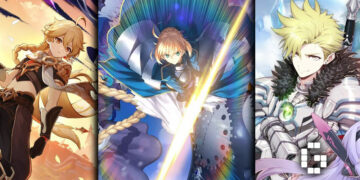
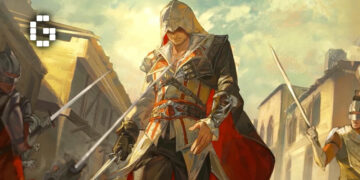






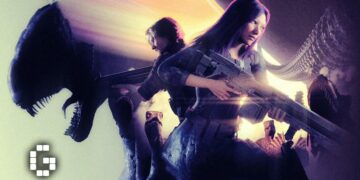

![[EXCLUSIVE] Creative Masterminds from Gearbox Software Reveal What Makes Borderlands 4 Worth the Wait](https://cdn.gamerbraves.com/2025/07/Borderlands-4-at-Bilibili-World-2025_Interview_FI-360x180.jpg)


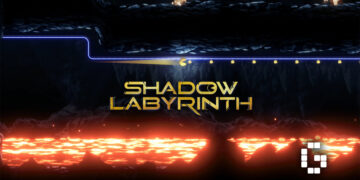

![[ASIA EXCLUSIVE] Bringing Back a Classic: Inside the Making of FINAL FANTASY TACTICS – The Ivalice Chronicles](https://cdn.gamerbraves.com/2025/06/FFT-Ivalice-Chronicles_Interview_FI2-360x180.jpg)



